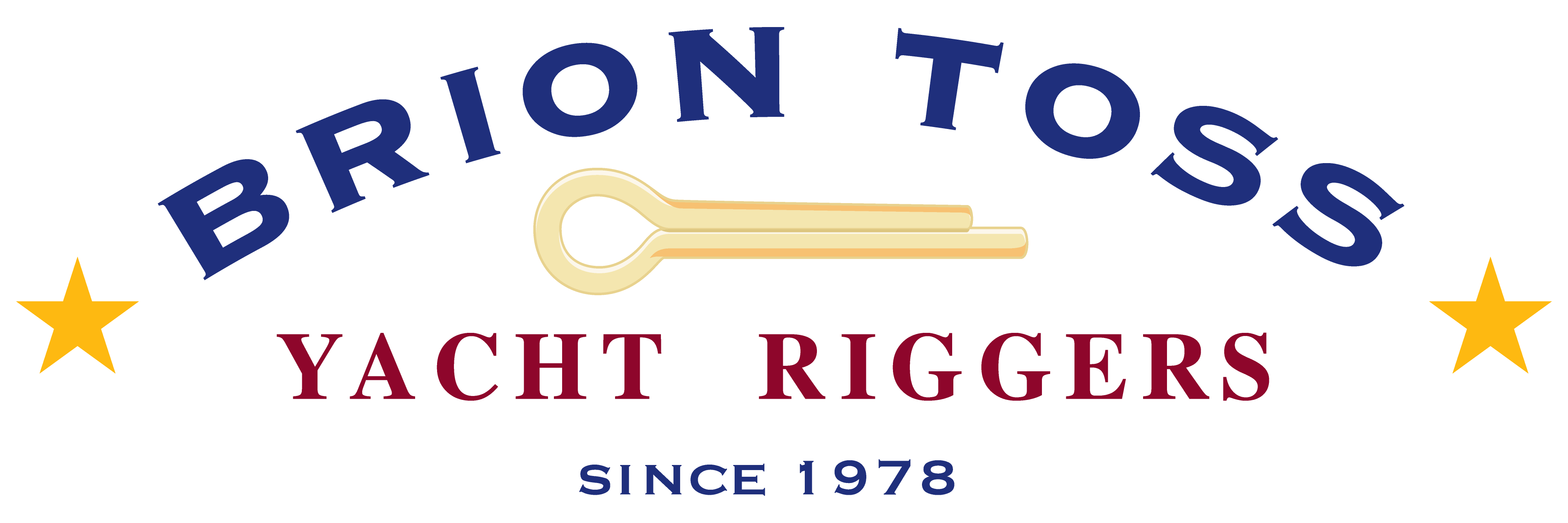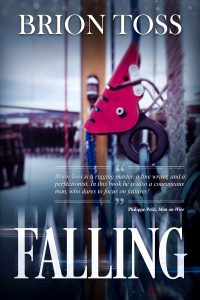Adventures in Maintenance, “Sea Cloud” Edition
Many years ago, I spent a few months as a rigger aboard the bark Sea Cloud. With about 32,000 square feet of sail when everything is up, this is a vessel that demands a good deal of skill, attention, and energy from its crew. Usually we were up to the challenges it provided. But sometimes, not so much…
- The Spike
A crewmember, we’ll call him Todd, was up on the foremast, when he dropped his marlingspike. It seems amazing to say it, but he had no lanyard on the tool, so it promptly hurtled towards the deck, far below.
This was a yachty-style spike, with a flattened handle end with a slot cut in it, for opening shackles. It made for a lousy shackle wrench, but had excellent aerodynamic properties, so the spike quickly oriented pointy-side-down.
Directly below was the narrow elevated deck in front of the wheelhouse, and standing on that deck, conversing, were the first mate and the bosun. They were perhaps an arm’s length apart. The bosun later said, “We were just chatting, and suddenly I felt a puff of air on my cheek, and in the same instant heard a sharp THWACK, and I looked down and saw this pissy little spike buried about two inches into the teak deck. It was vibrating.”
The bosun and the mate looked at the spike, then looked aloft, and saw Todd, frozen in place, with the horrified/relieved/embarrassed expression that people wear when they have narrowly avoided killing somebody. The bosun gestured him back down to deck, and without saying a word walked him to the tool locker and handed him a needle gun. This is basically a cross between a multi-pronged tattoo machine and a jackhammer. It is ostensibly for chipping rust off metal surfaces, but is actually a form of corporal punishment, meted out by bosuns to deserving souls. A few hours with use will leave you deaf, numb, and with aching joints and a stunned brain.
- The Sheave
After performing a suitable duration of penance, Todd was let back into the more pleasant workings of the ship, and was eventually assigned the tricky task of removing the foremast’s t’gallant halyard sheave for repair. This sheave, essentially a 50 lb. bronze hockey puck with a hole for an axle, was set in the mast, well over 100 feet above deck. Todd went up with all suitable tools – with lanyards on all of them – and set about his work. He wasn’t worried about the sheave falling out, as it was stuck fast in its mortise, so he began by driving the axle out, seizing its own lanyard onto it as it emerged from the side of the mast.
At first, he couldn’t figure out how to put a lanyard on the sheave before driving it out, but then he noticed the nice convenient hole where the axle used to be, so he threaded a piece of rope through the mast and the sheave, tied the ends together around the mast, and commenced bashing on the sheave with a hammer and punch. I am not making this up. Naturally the sheave severed the rope as it slid out of the mortise, and Todd watched, with a horrible sense of déjà vu, as the sheave plummeted towards deck.
This time it fell aft and a little to starboard of where his marlingspike had gone, right towards a rack of five windsurfer boards that were stored outside the captain’s cabin. The deck was spared serious damage because the sheave was slowed by its passage through every single board. The captain heard the noise of the impact, opened his door, looked at the remains of the boards, looked up, looked back at the boards, shook his head, and went back into his cabin. Todd became reacquainted with the needle gun.
- The Trapeze
We had a monster of a rugby-playing, beer-drinking, ponderous deckhand we’ll call Glen. He was a guy with a face that could make a freight train take a dirt road, but he was not unpleasant to be around. Except when he slept; when he slept he would more or less continuously cough, sneeze, snore, fart, burp and talk, sometimes all at once, all night long. When he was awake, he was occasionally handy for moving large heavy objects, and he came to take pride in his strength. His station was on the mizzen mast, and his favorite job was to furl squaresails. To perform this task you lay out on the footropes, lean way forward over the yard, grab fistfuls of canvas, and heave them up onto the top of the yard, then go back for more. Glen was very tall, with gorilla-length arms, so he could gather in and hoist a lot of canvas. As he developed his technique, people started watching him instead of helping to furl. They were amazed and complimentary about what he could do. Glen was pleased, and they didn’t have to work as hard, so everybody was happy.
One day, at the peak of his abilities, Glen was on the mizzen lower topsail yard, pretty much furling the entire port side of the sail all by himself, when the yard captain – let’s call him Chris – came out on the yard. He wanted to get to the outboard end, to tidy up the sail out there, so as he approached Glen he said, “Just hold on a moment, I’m going to step behind you.” Glen leaned forward and was still, and Chris thought this meant it was okay to pass by, so he unclipped from the jackstay and stepped behind. But Glen hadn’t heard him, didn’t even know he was there; he was so still because he was concentrating, bracing himself for a world-record furling heave, which he exploded into at precisely the wrong moment, knocking Chris completely off the yard.
I was looking aft at that moment, and saw Chris silhouetted, spread-eagled in thin air. It was an awful moment, because it was obvious that Chris was about to take a probably-fatal fall. But when Glen pulled up on the sail, it caused his feet to push the footrope back, like a trapeze swinging into the reach of Chris. He grabbed it as he fell, hung swinging for a moment, then calmly asked Glen to move inboard, whereupon he swung back up to the yard, and finished furling the sail. Shortly thereafter, Glen became familiar with the workings of a needle gun.
- The Helper
Some days are perfect, and this one looks like it is going to be one of them. The sea is a series of gentle, regular, sparkling swells, the morning sky is an impossible shade of blue, with just enough clouds to keep the sun from overdoing it, and there is a pleasant breeze driving us along. My job this morning is to attend to a misbehaving yard band at the main t’gallant. It is a complex task, involving coordination with deck crew to tighten and slacken assorted strings, plus lots of parts to secure and switch out, plus a good deal of semi-acrobatic choreography at the end of the yard. The work requires more than one person aloft, and the bosun has assigned a stolid, steady German to help me. We’ll call him Heinrich. Together we festoon ourselves with tools and parts, and begin to climb.
I lead the way as we climb the lower shrouds, to the top of the lower mast, which is taller than most sailboat masts. We clamber out on the futtocks, up onto the platform, and commence climbing the topmast shrouds, and out on the next set of futtocks, and then up the t’gallant shrouds. By now we can feel the sway of the boat. We are well over 100 feet up, and motion that is scarcely noticeable at deck has become travel through an arc of 20 feet or more. We keep going, and eventually we lay out onto the yard, and make our way to its finely-tapered end. I am organizing my thoughts about the order of business when Heinrich catches up, sidling along the footrope, and comes to a stop next to me.
“Ohh,” he says. I am as drunk as shit.” Then he throws up.
“Right,” I say, “Back to deck. You first.”
So we make our way inboard to the mast, back down all those shrouds, back to where the bosun is waiting for us, wondering what the bloody hell is going on. Heinrich sheepishly explains, and the bosun nods sympathetically.
“Oh, sounds like you feel awful,” says the bosun. “I’ve got just the thing for a cure.” And he heads for the tool locker.
The Sea Cloud is still sailing, still magnificent, and no doubt still providing its crew with challenges and delights. To see about being a crewmember, visit Unicrew.
If you’d prefer to be a passenger, visit Sea Cloud Cruises.
Enjoy the story? Looking for more? You’re in luck! “Falling,” which in includes all of these stories along with other tales from aloft, both thrilling and amusing, is now for sale on Amazon.com in handy e-book form! Or click here to get it on Apple iBooks!
From dropped tools to collapsed towers to near-fatal falls, the litany of accidents and near-accidents is long… and the sometimes miraculous outcomes are both instructive and thought-provoking.
Not a technical manual, “Falling” is nonetheless a must-have companion in the library of anyone working at heights.
Our current Puzzle has gotten a lot of interest, but so far not many entries. If you are up for a challenge, you can see it here. Hints: sheet load does not mean the clew load divided by a purchase; and true wind is not the only wind.
If you would like to read other articles and puzzles, you can dig in here.
Thanks for all the ongoing kind words that so many of you have sent about my writing. If you know someone who might also enjoy this site, please let them know where to find me. You and they can subscribe for email notifications at the bottom of this page.


April 27, 2018 @ 6:50 am
Brion – you make me smile. thank you.
Hints for the Anomalous Sheets Puzzle – Brion Toss Yacht Riggers
April 29, 2018 @ 7:29 am
[…] To see my most recent post, about rigging misadventures aboard the bark Sea Cloud, visit here. […]